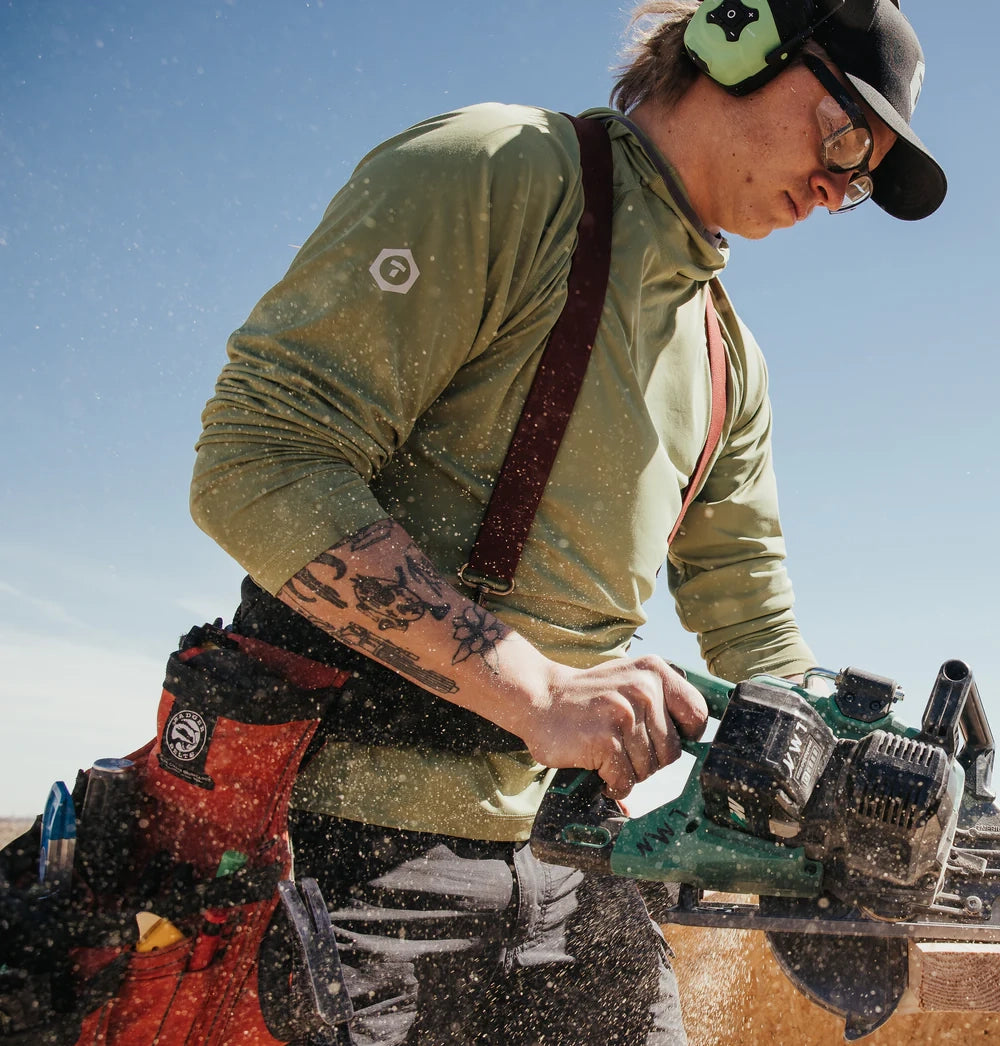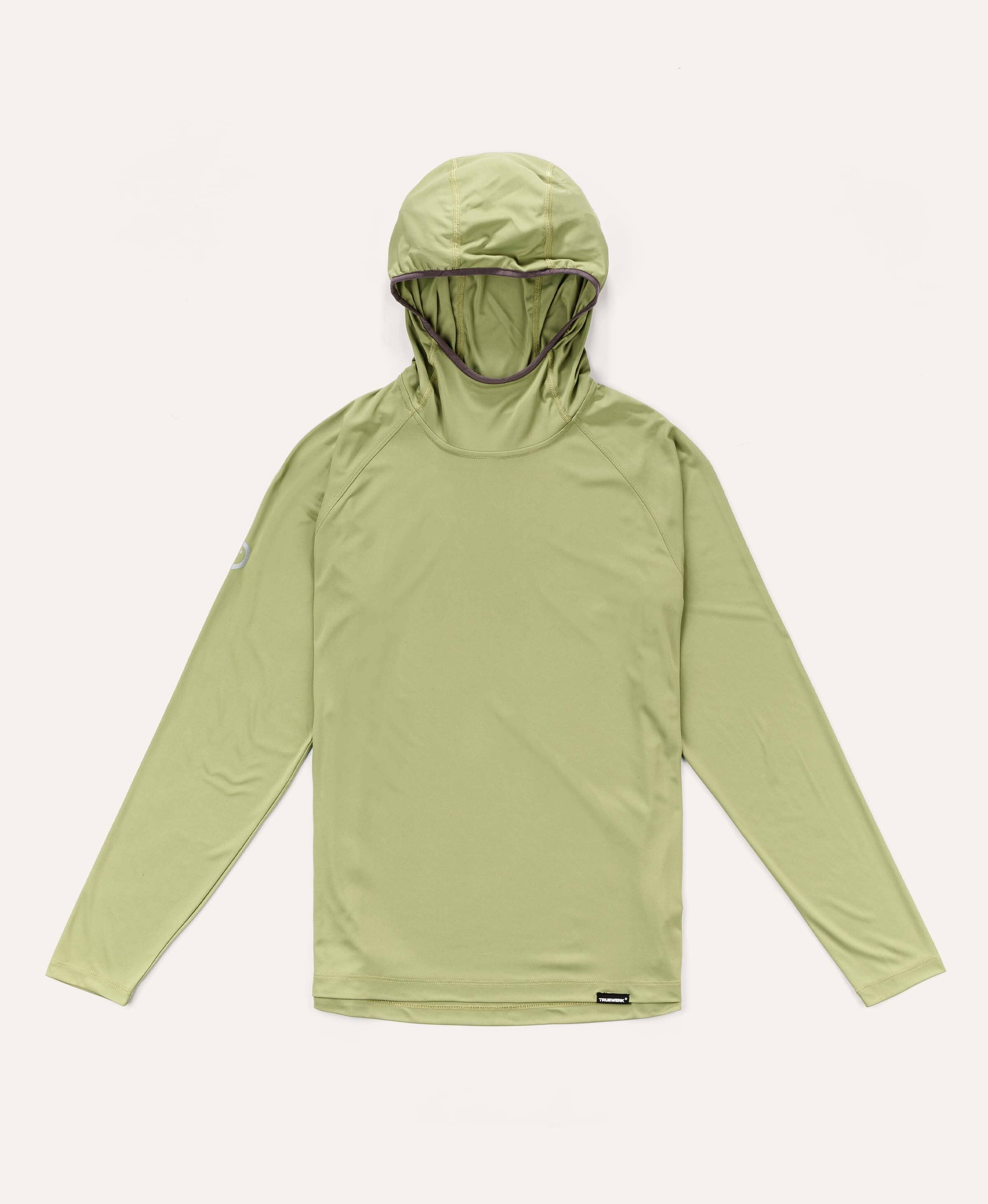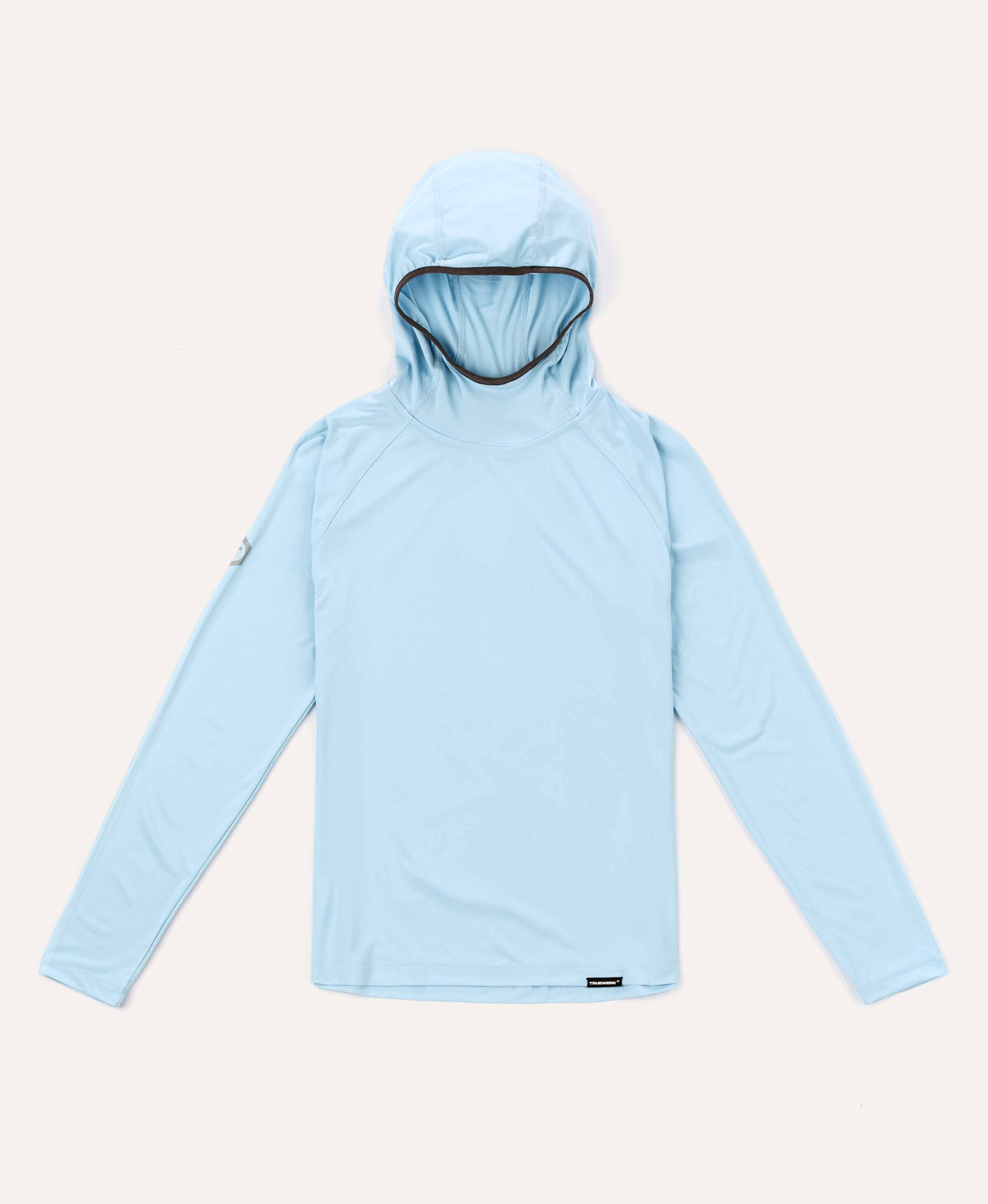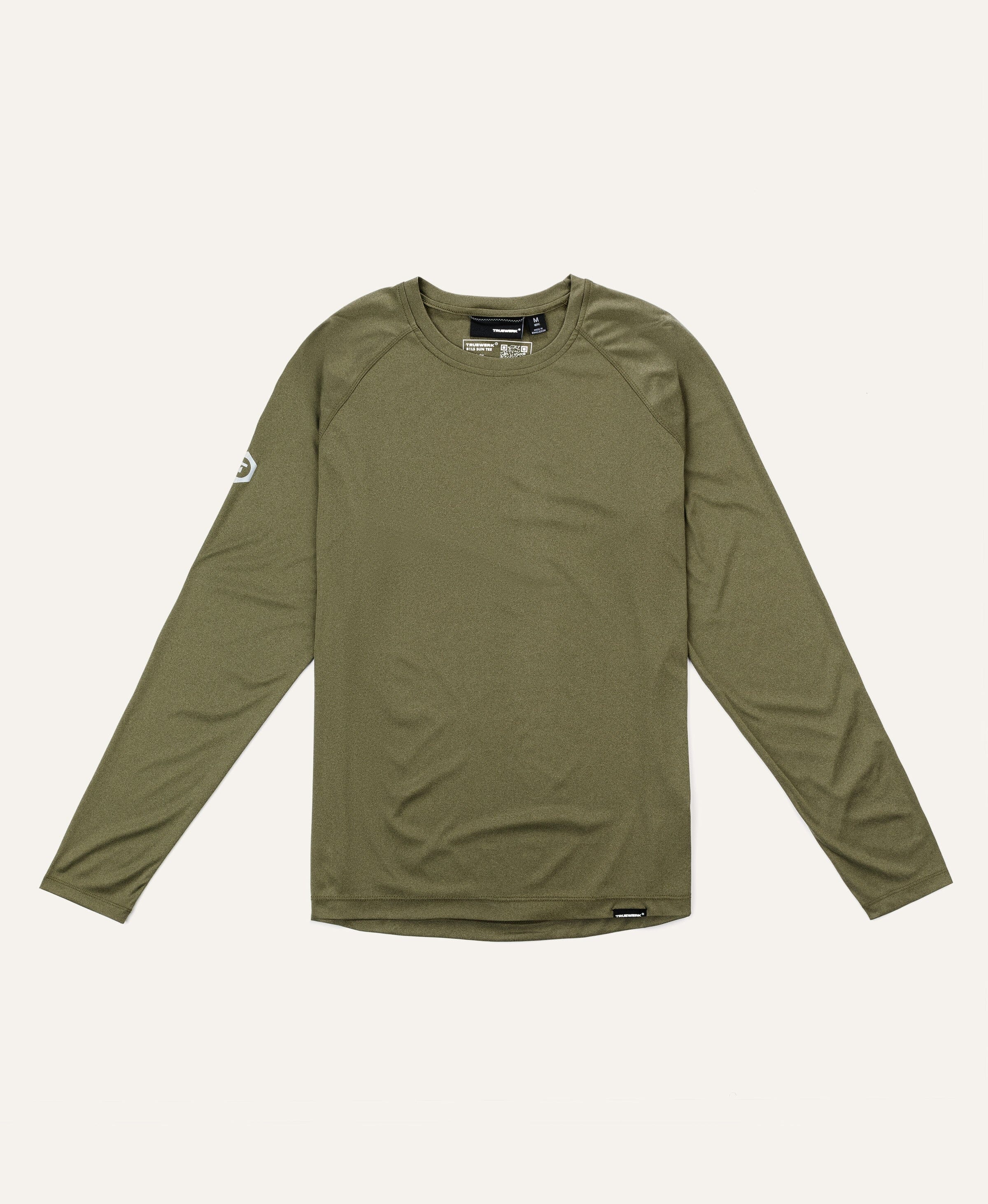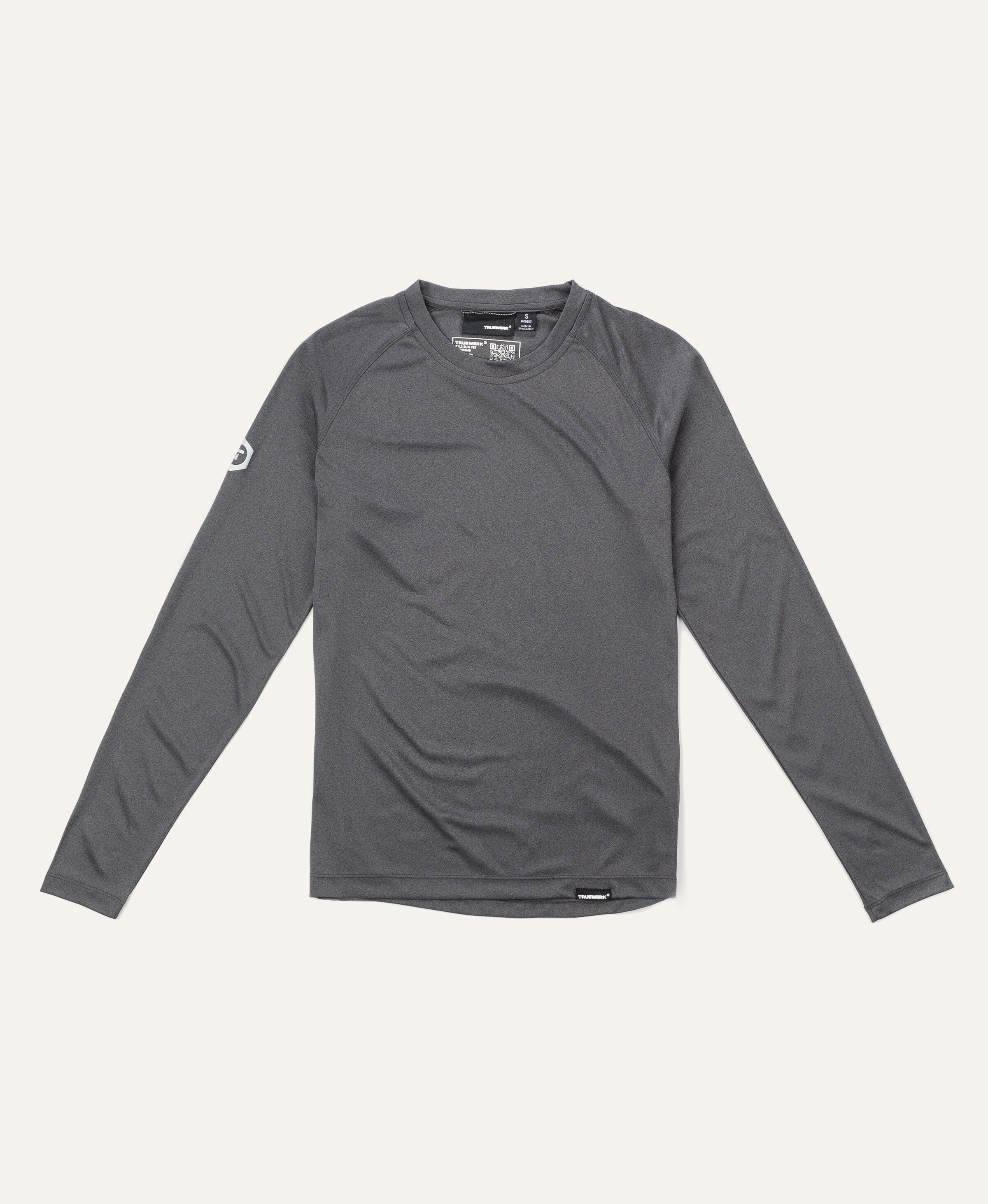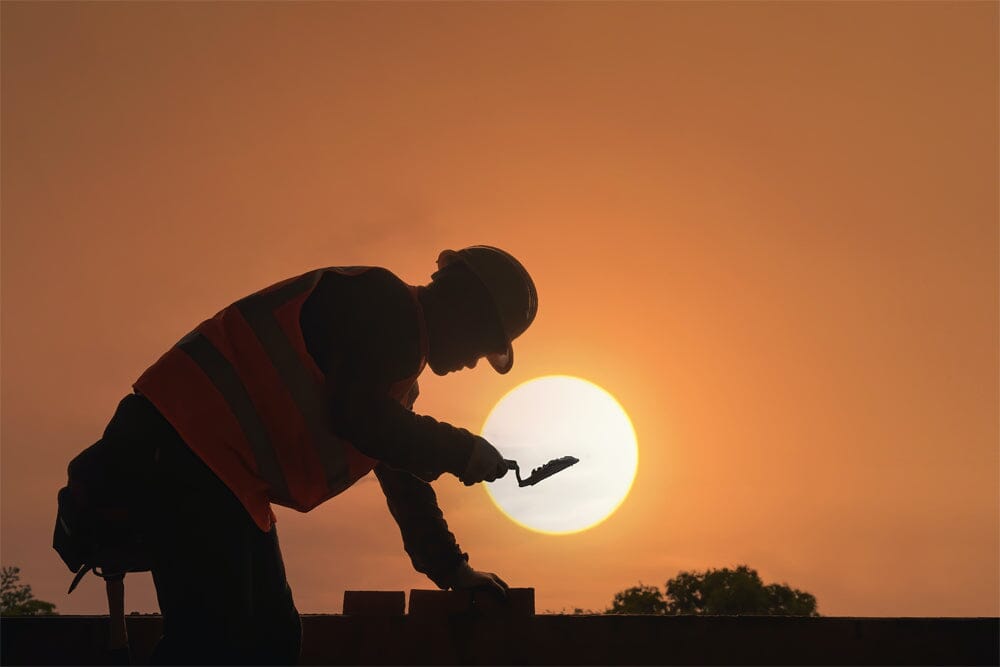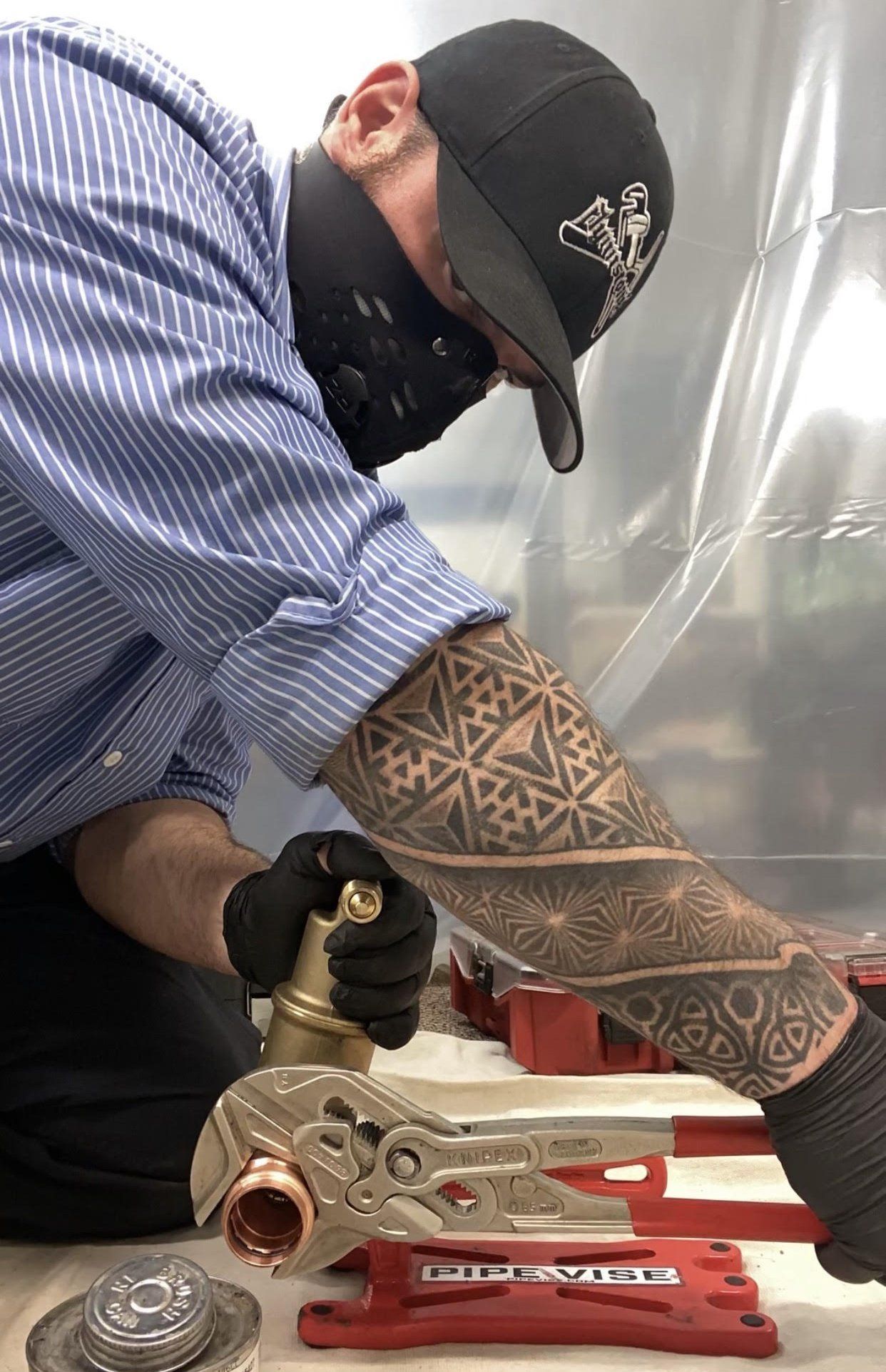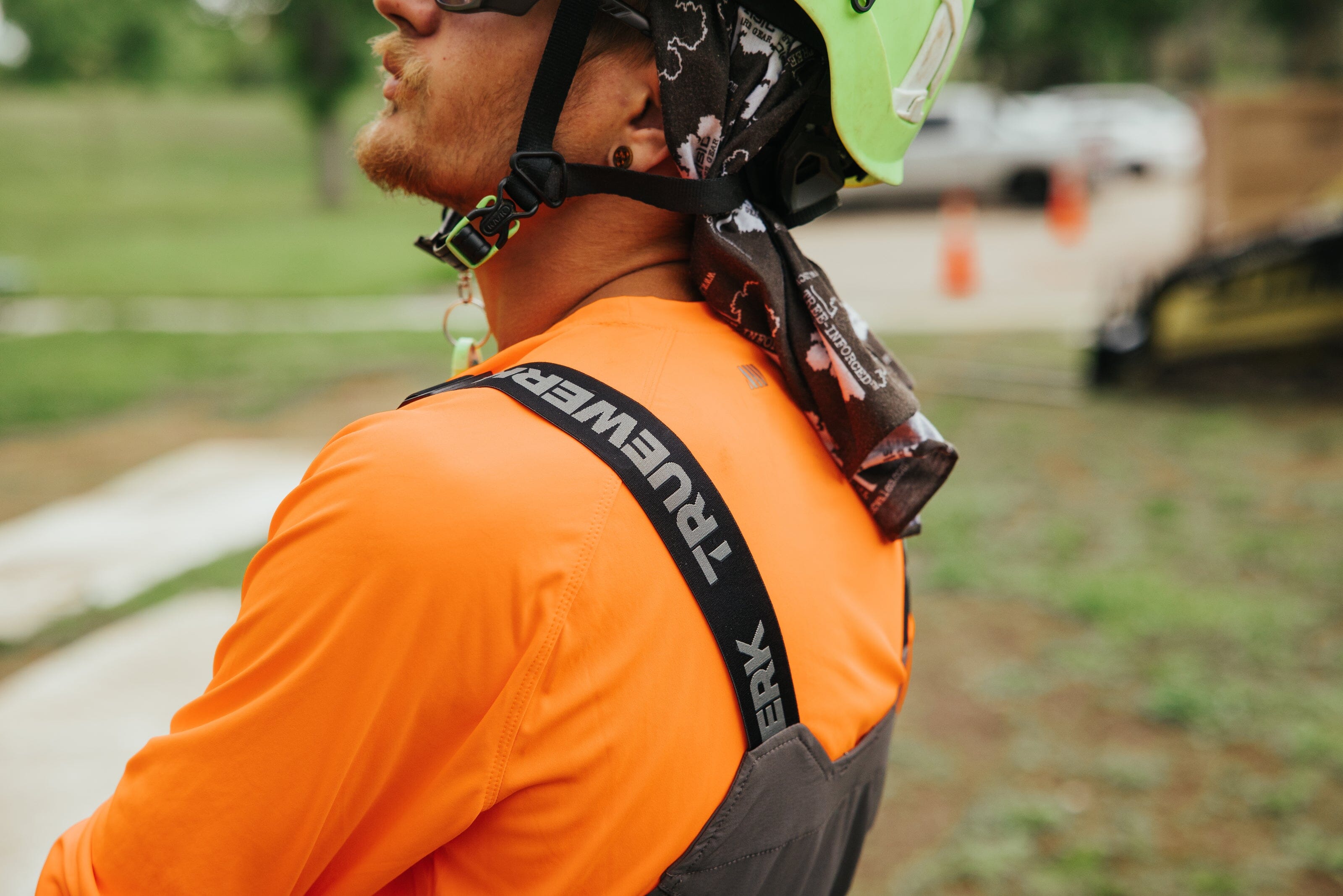It’s officially that time of year. When the sun’s heat seems to taunt our every move outside, sweat starts dripping down your forehead before you’ve even arrived at the jobsite, and cold showers are suddenly a welcomed luxury after working in the sun all day...yeah, we all know the feeling.
Say hello to July, which according to the National Oceanic and Atmospheric Administration (NOAA) is the warmest 31 days for most of the country. In 2019, July was even the hottest month on record for the entire planet. In other words, there’s no better time to brush up on some sun safety tips and get equipped with sun protection for outdoor workers.
Extremely high temperatures come with an ample amount of obstacles to staying healthy while working outside. Obstacles that—if not prepared for—can leave a lasting impact long after the summer’s heat recedes. We’re here to help you make working in the sun safer and more comfortable. Whether it be by pointing you toward the T.5 WerkHoody to keep you protected with ease from the sun’s rays or by passing along some simple, useful information to embrace and share.

Don’t Let the Sun Win Against Your Skin
Skin cancer is already the most common cancer in the United States according to the Center for Disease Control and Prevention (CDC). Naturally, those who spend all or part of the day regularly working outdoors are at even greater risk of being affected. This is because the sun’s ultraviolet rays—UV radiation—are the leading cause of skin cancer.
Everyone must take precautions when working in the sun because skin cancer doesn’t discriminate. All skin tones can be damaged by exposure to UV radiation and, even worse, that damage is permanent, irreversible, and increases with every exposure. Never overlook the importance of following sun safety tips and guidelines.
If you can’t take our word for it, take it from Rick Tinker, Section Manager of Assessment and Advice for ARPANSA: “Even though darker skin offers some natural protection against solar UV radiation, those people are still not immune to developing skin cancers. Employers need to make sure that all workers take precautions in protecting themselves from solar UV radiation.”
UV radiation is nearly always present outdoors (even when you’re not working in the sun), and the Cancer Society reports that in any given location it can be affected by…
- Sun Elevation: The higher the sun is in the sky, the higher the levels of UV radiation at the Earth’s surface. Therefore, levels of UV radiation are highest in the middle of the day and during summer months.
- Latitude: The closer to the equator you are, the higher the levels of UV radiation.
- Cloud Cover: UV radiation can pass through light cloud cover, and on slightly overcast days, the intensity of UV radiation can be similar to that of a cloud-free day. You don’t need to be working in the sun to be exposed.
- Altitude: At higher altitudes (pay attention to this if you’re working where TRUEWERK is based—Denver!), the atmosphere is thinner and absorbs less UV radiation.
- Reflective Surfaces: Some building and ground surfaces such as polished aluminum, construction materials, lightly colored concrete, water, and snow can bounce UV radiation back onto the skin and eyes.
Wear Workwear With UPF Protection
Following sun safety tips and guidelines is a must for everyone, but especially for outdoor workers in trade industries. The Cancer Society found that they’re 10x more likely to develop conditions from harmful UV radiation. Naturally, that figure increases for those who are regularly working in the sun directly. 8,500 people are diagnosed with skin cancer every day, but only 18% of outdoor workers say they always wear sunscreen at work. Meanwhile, those same outdoor workers experience 10x more exposure to harmful UV radiation.
We get why a whopping 82% of folks aren’t lathering up with protection; we’ve heard from many of you how much sunscreen can suck sometimes. It’s sticky and a magnet for dust and debris on the jobsite. It doesn’t last all day either, so that means frequent trips to reapply, and let’s be honest: no one is eagerly doing that. The solution? UPF (ultraviolet protection factor), the numerical rating given to clothing to indicate how effectively it blocks UV radiation.
When you’re working in the sun (or outdoors in general), we urge you to swap out the sunscreen you’re inevitably not using (or supplement it) with protective clothing that covers vulnerable areas like your arms and neck. TRUEWERK has your back on this one—literally. The T.5 WerkHoody or the Cloud Shirt are both options that deliver lightweight, fast-drying, and breathable fabric to keep you cool. Plus, UPF protection.
While we’re talking sun safety tips and sun protection for outdoor workers, remember that your eyes and face need protection from the sun, too. If you haven’t already, it’s time to invest in some durable eyewear with UV protection and a work cap.
Hydrate, Hydrate, Hydrate
Three-quarters of Americans are dehydrated (Water Natura). You, reading this right now, go drink some water even if you’re not working in the sun!
Back? Great. Drinking water is essential for survival, and it’s even more important if you need to perform at your best—that’s everybody in the trade industry.
Water helps regulate and maintain body temperature, removes waste products, and moistens your mouth, eyes, nose, hair, skin, joints, and digestive tract. Without water, your body would quite literally shut down.
Since the brain is made of about three-quarters water, when there’s a slight loss of water, the brain will shrink in size. Studies have demonstrated that brain functions like short-term memory, focus, and visual motor tracking can all be impaired even when water loss is at a mere 2% of body weight. If you’re feeling slightly thirsty while working in the sun, you’re already on the path to that water deficiency and slower reaction times is a very dangerous thing on the jobsite.
It’s critical to watch out for other symptoms of dehydration too—less frequent urination, dark-colored urine, fatigue, dizziness, and confusion (Mayo Clinic). Taking a pee break on the job? Use the “golden rule” test we mentioned in our health blog back in April: Check your pee (yup, we said look at your pee). If it’s clear to pale, you’re drinking enough H2O. The more golden it looks, the more water you need to drink.
Here are some other sun safety tips to avoid dehydration and function your best while working in the sun:
- Drink at least 16-24 ounces of fluid one to two hours before you start your work day. After that, you should consume 6 to 12 ounces of fluid every 10 to 15 minutes while you are outside. Estimates suggest that workers in heavy PPE can lose as much as 2.25 liters every hour.
- When you get home from work, keep drinking. To replace what you’ve lost throughout the day, you need at least another 16 to 24 ounces (2-3 glasses).
- Keep your water cool if you can—the body absorbs water in the 50-60 degree range much faster, plus it’ll feel great when you’re working in the sun. Insulated stainless steel water bottles from brands like HydroFlask can keep your water chilled nearly all day.
- Keep the basics in mind—you should be drinking at least half of your body weight in ounces of water every day (even the days you aren’t working outside or in a hot attic). For example, a 150-pound person should drink 75 ounces (about 9 glasses) of liquid each day.
- Eat the rainbow. 20 percent of our daily water intake comes from food, so don’t forget to take snack breaks while you’re working in the sun. Munch on high-water foods, such as watermelon, cantaloupe, cucumbers, berries, and leafy greens. They’re all nutritional powerhouses with a hydrating impact.
Beat the Heat
 Besides sun safety tips, we’re bringing you heat safety tips, too. After all, the sun isn’t your only enemy in the summer. When it comes to working construction in the summer heat, the two most significant risks to be aware of are heat stroke and heat exhaustion. Both are conditions caused by working strenuously or overexerting in hot, humid environments when your body fails to cool itself down efficiently and effectively. Without prompt treatment, heat exhaustion caused by working in the sun can lead to heatstroke, a life-threatening condition.
Besides sun safety tips, we’re bringing you heat safety tips, too. After all, the sun isn’t your only enemy in the summer. When it comes to working construction in the summer heat, the two most significant risks to be aware of are heat stroke and heat exhaustion. Both are conditions caused by working strenuously or overexerting in hot, humid environments when your body fails to cool itself down efficiently and effectively. Without prompt treatment, heat exhaustion caused by working in the sun can lead to heatstroke, a life-threatening condition.
Fortunately, heat exhaustion IS preventable. For example, drinking water and protecting your skin are just two of the many ways to prevent heat exhaustion. There are also many signs you can catch early if you know what to look for. Check our handy Heat Facts Sheet.
Order Your TRUEWERK Summer Werkwear
Your health is important to TRUEWERK all year round, and we encourage you to pay special attention to how you might need to adjust your routine and make positive changes for your body depending on the season.
You don’t only need protective workwear when you’re working in the sun. Shop our technologically advanced construction wear so you can stay comfortable and safe in any environment. If you’re gearing up for those sunny scorchers, you can learn more about our sun protection workwear for outdoor workers here.
Let Us Know How You Stay Cool
Show us how you’re embracing the summer sun safety tips we talked about here. Comment below or tag us on Instagram @TRUEWERK!
Plus, if you know someone (or are someone) who’s representing the trades to keep the foundation of our communities strong, we want to hear about it. Send us an email at Marketing@truewerk.com with your story. We encourage you to include a photo that captures the hard work being performed whether you’re working in the sun, rain, or snow.
